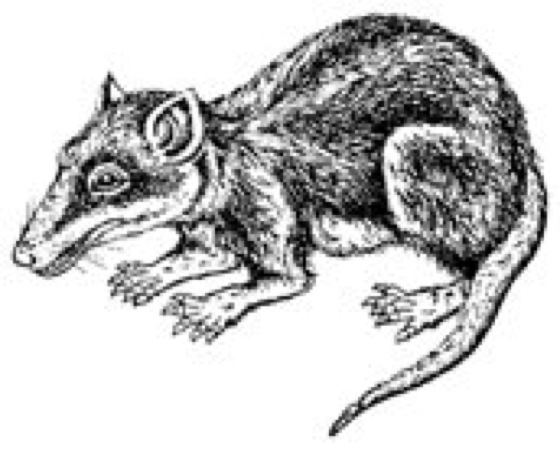Clade Mammaliaformes Rank Order | Suborder Cynodontia Phylum Chordata | |
 | ||
Clade †DocodontaKretzoi, 1946 Similar Morganucodonta, Symmetrodonta, Mammaliaformes, Castorocauda, Triconodonta | ||
Docodonta is an order of extinct mammaliaforms that lived during the mid- to late-Mesozoic era. Their most distinguishing physical features were their relatively sophisticated molar teeth, from which the order gets its name. Until recently, Docodonta were represented primarily by isolated teeth and bits of jawbones, with most of these specimens found across former Laurasia (modern-day North America, Europe, and Asia), and some from Gondwana (modern-day India and Southern Hemisphere). However, recent discoveries in China have included some exceptionally well preserved almost complete body fossils
Docodonts are traditionally thought to have been primarily ground dwelling and insectivorous, but Castorocauda and Haldanodon were specialised for an aquatic lifestyle and had recurved molars, which suggests possible fish or aquatic invertebrate diet. It was thought likely that many docodonts had tendencies towards aquatic habits, given their presence in wetland environments. However, recent discoveries such as the specialised digging species Docofossor, and specialised tree-dweller Agilodocodon suggest Docodonta is more ecologically diverse than previously suspected. Docofossor shows many of the same physical traits as the modern day golden mole, such as wide, shortened digits in the hands for digging.
Taxonomy
Docodonts are not as closely related to the placentals and marsupials as the monotremes, and are not included in the crown-group mammals. The complexity of their molars and the fact that they possess the dentary-squamosal jaw joint, means that they are sometimes regarded as belonging to Mammalia. Some authors limit the term "Mammalia" to the crown group, however, excluding mammaliaforms like the docodonts.
